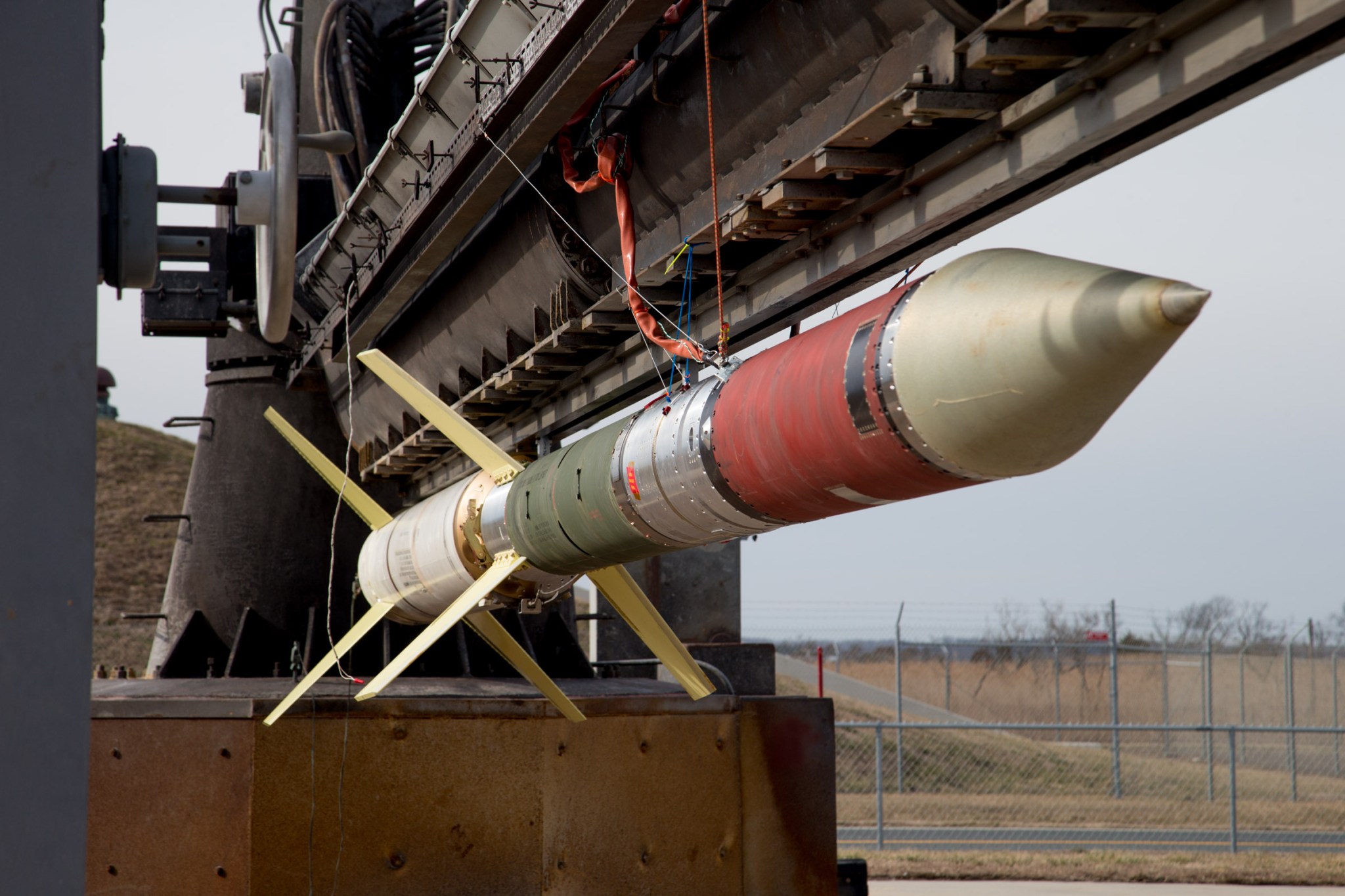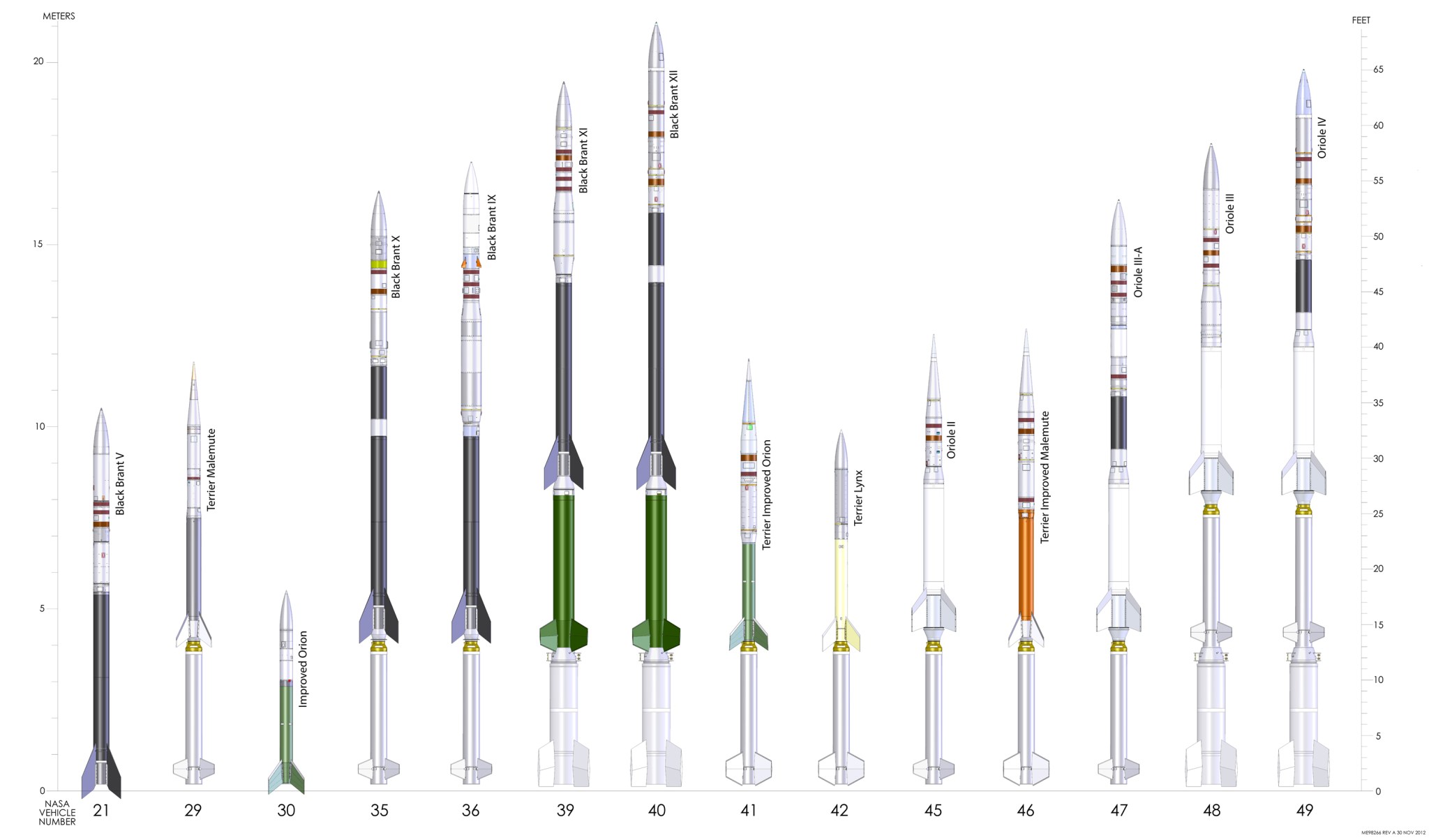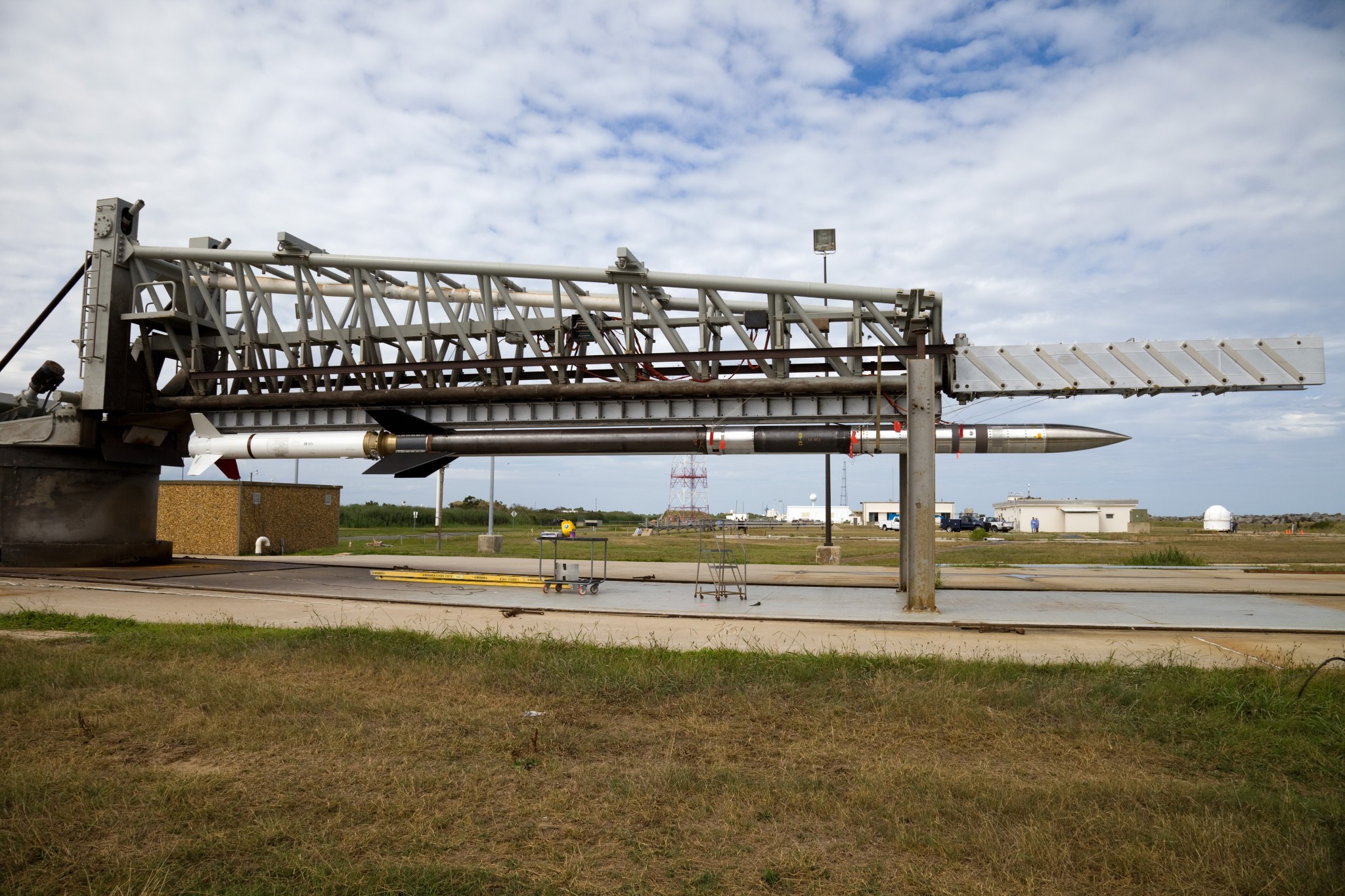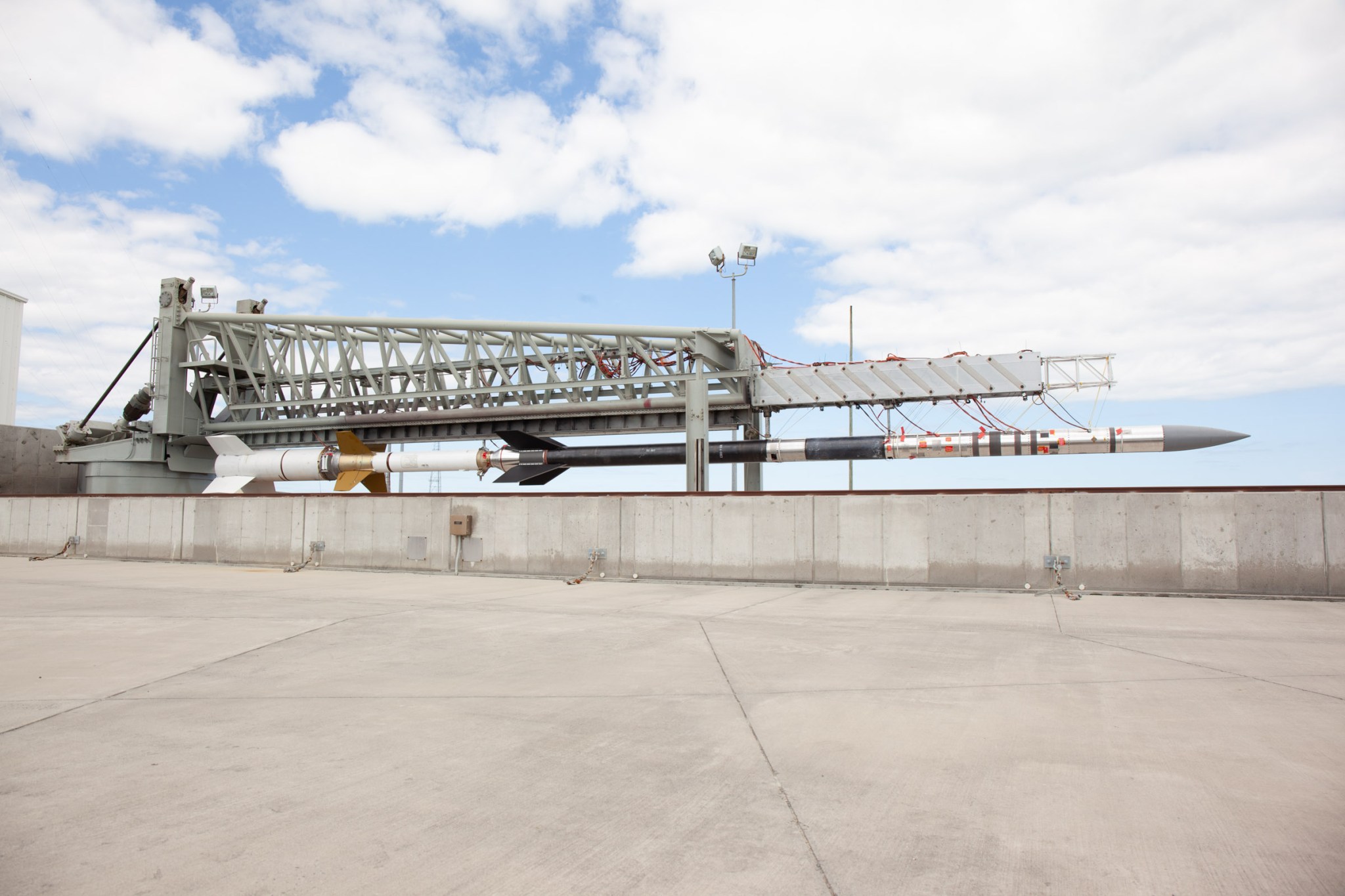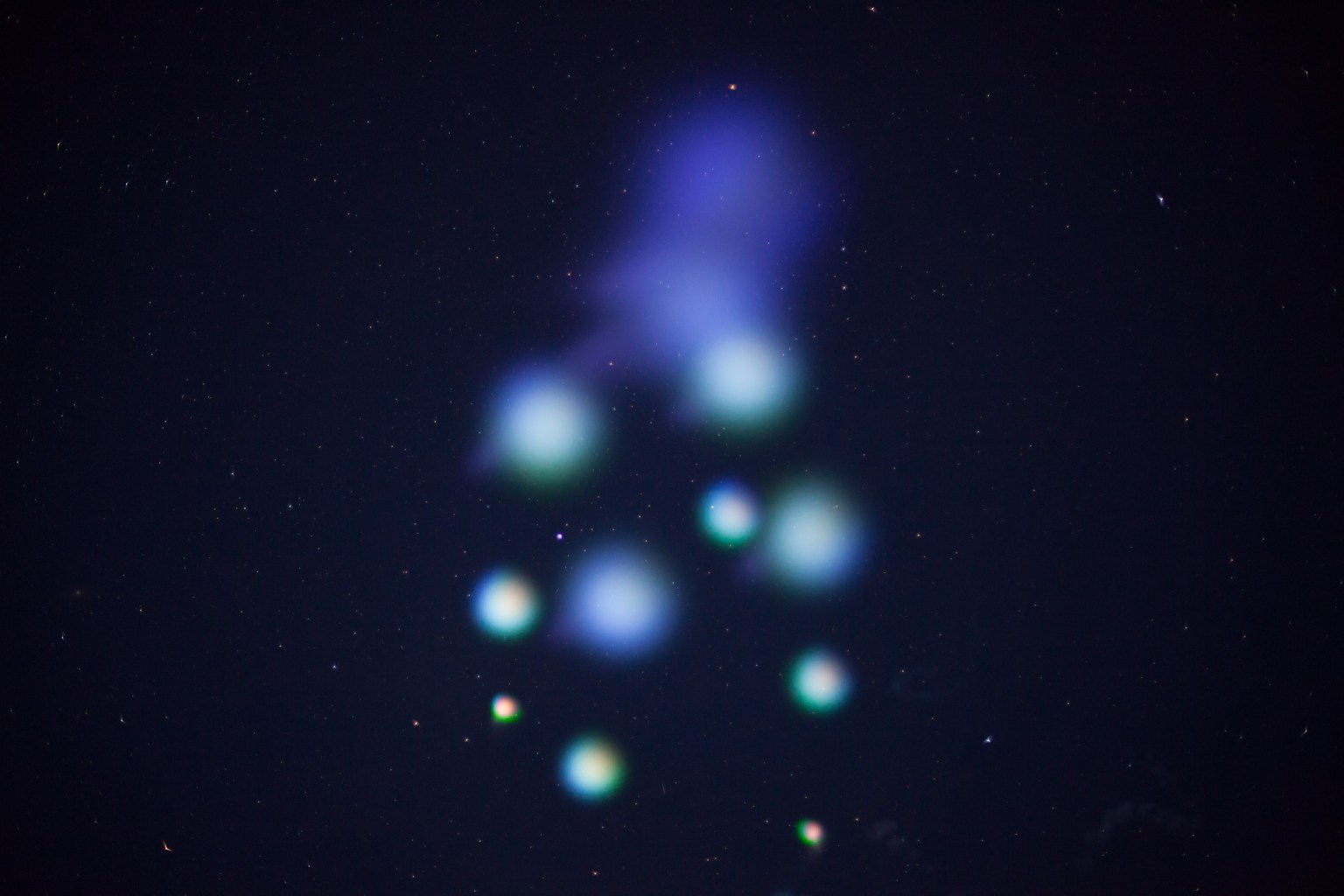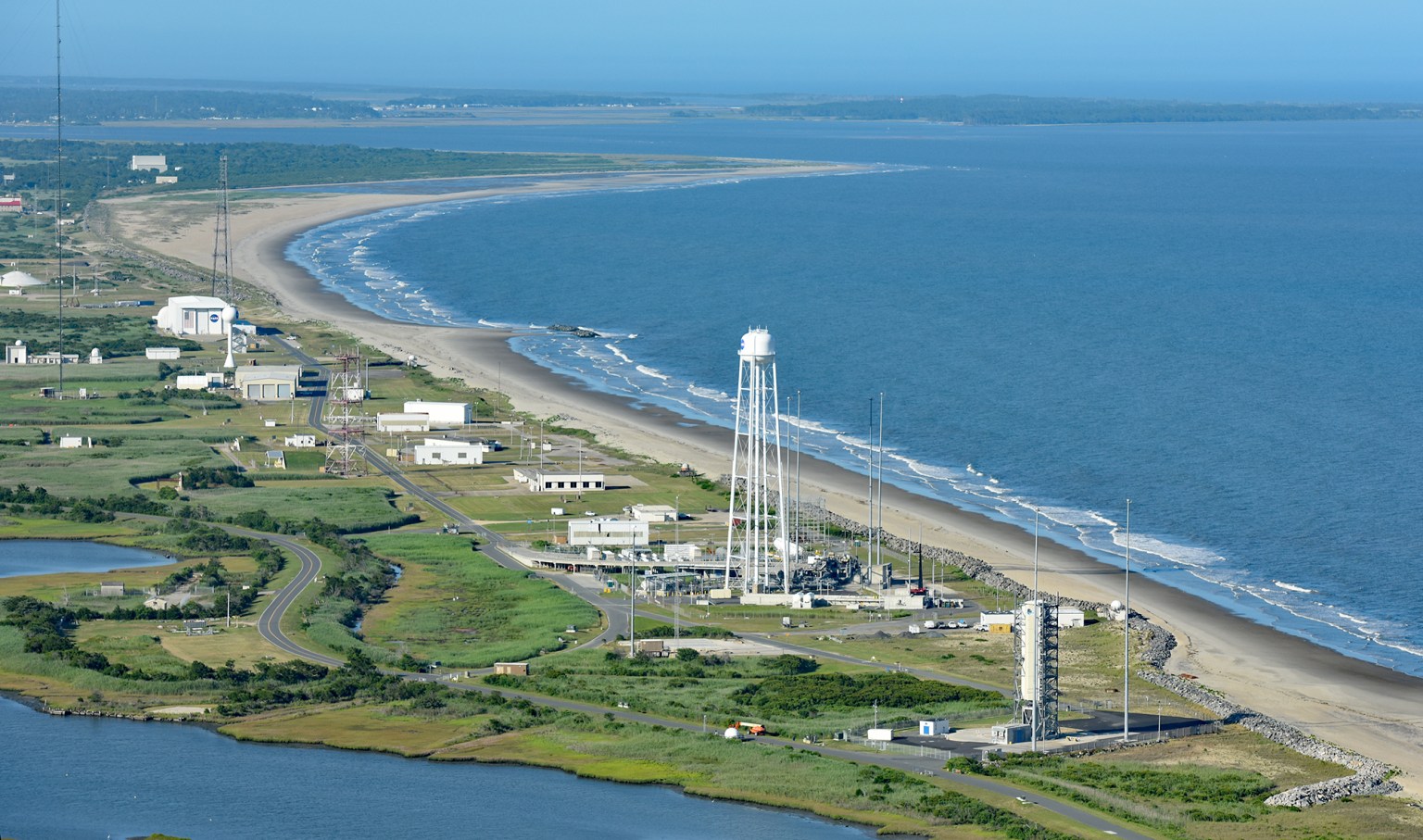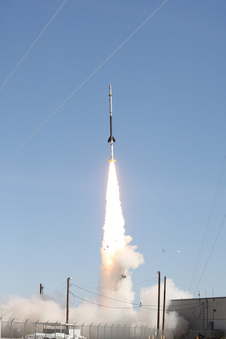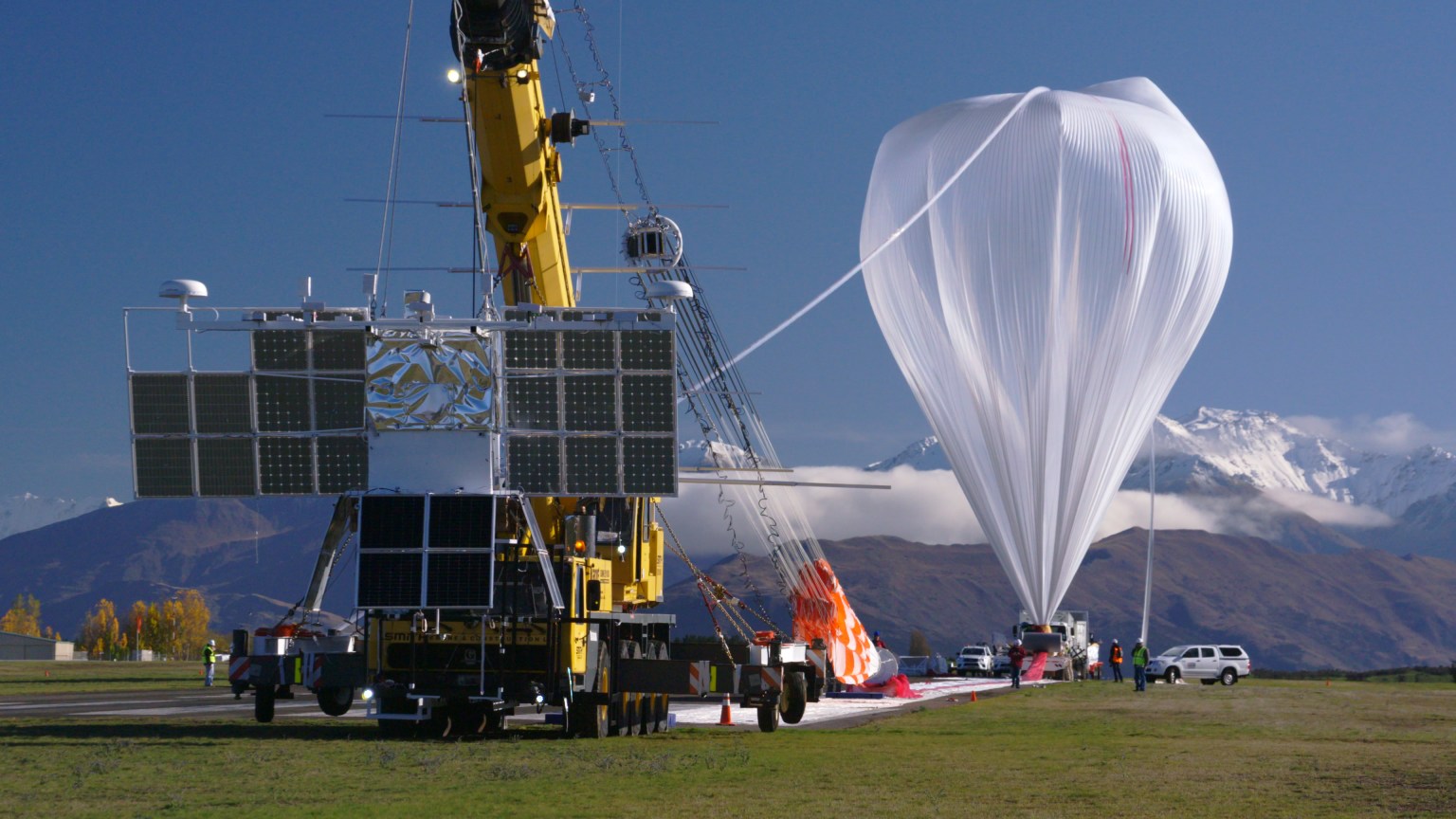Terrier Improved Orion
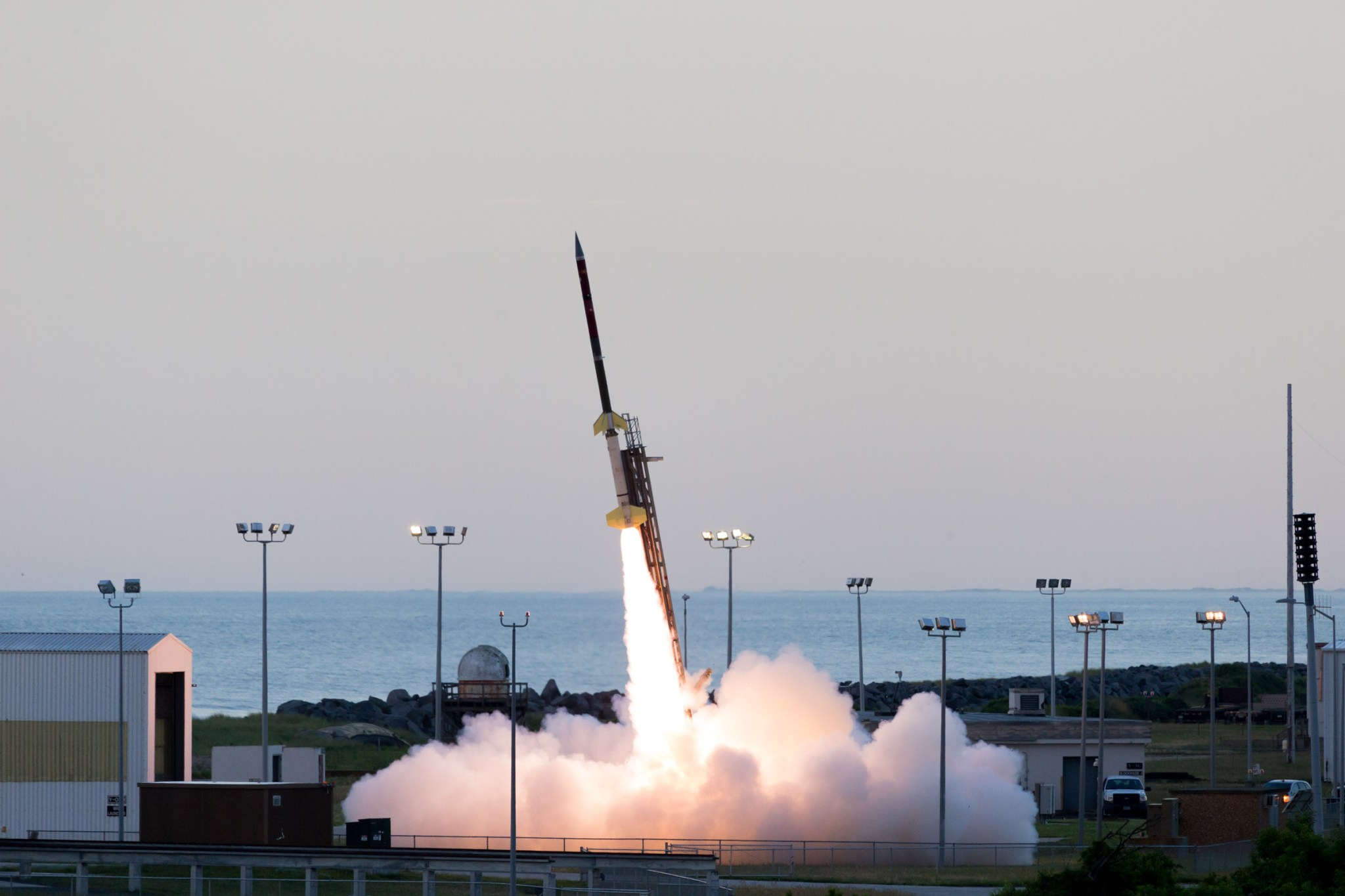
NASA successfully launched a MK12 Terrier-Improved Orion suborbital sounding rocket carrying student experiments with the RockOn/RockSat-C programs at 6:06 a.m., June 24, 2016. More than 200 middle school, high school, community college and university students and instructors participating in Rocket Week at Wallops were on hand to witness the launch. Through RockOn and RockSat-C students are learning and applying skills required to develop experiments for suborbital rocket flight. In addition, high school educators through the Wallops Rocket Academy for Teachers (WRATS) are learning about applying rocketry basics in their curriculum. The payload flew to an altitude of 74 miles and descended by parachute into the Atlantic Ocean off the coast of Wallops. Payload recovery is in progress.
Terrier Improved Malemute
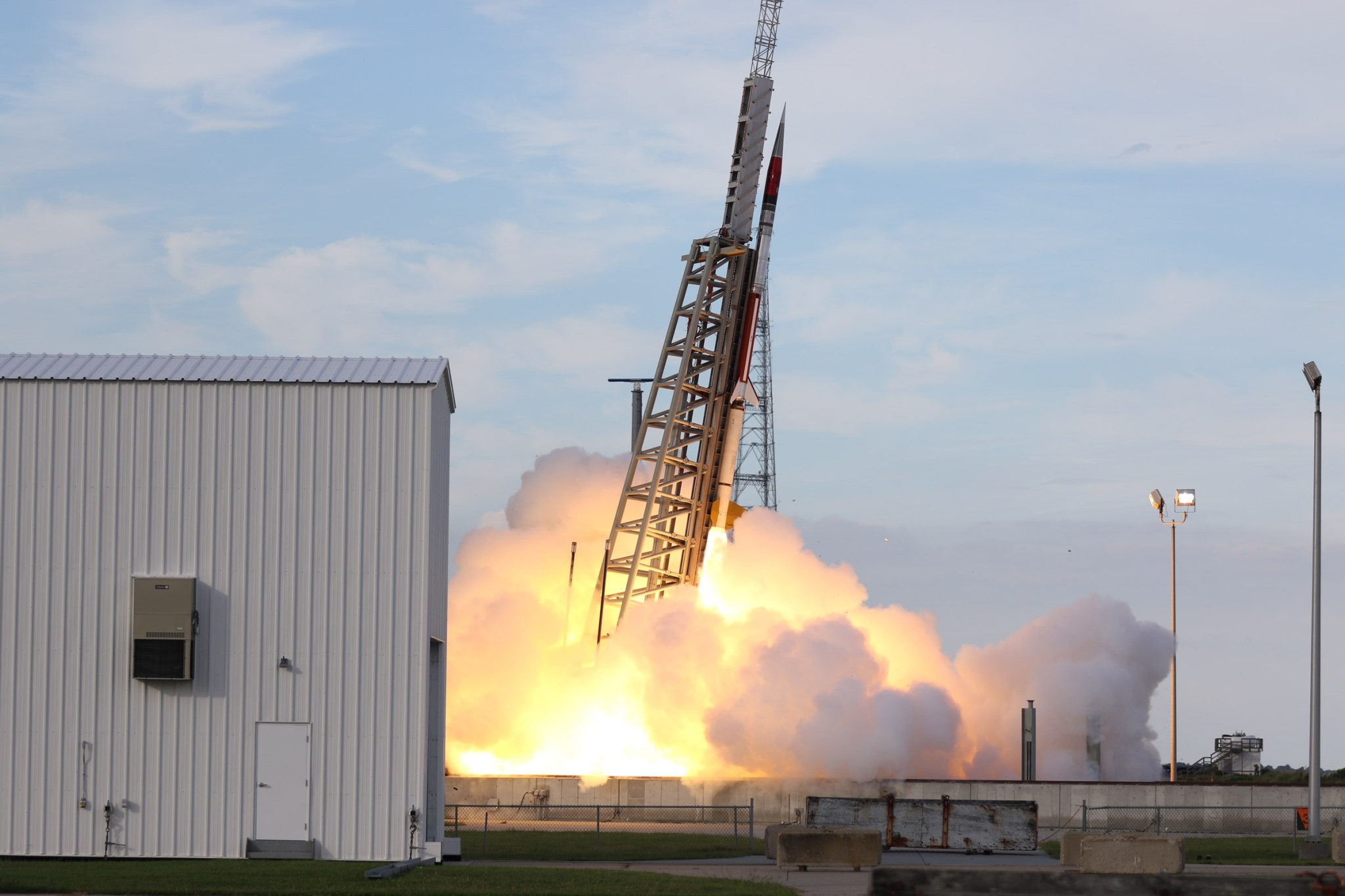
On Thursday, August 11, 2022, a Terrier-Improved Malemute sounding rocket for the RockSat-X mission launched from Wallops Island, VA, carrying scientific experiments from various educational institutions. Participating institutions include Arapahoe Community College in Littleton, Colorado; Red Rocks Community College in Lakewood, Colorado; College of the Canyons in Santa Clarita, California; Virginia Tech in Blacksburg; Northwest Nazarene University in Nampa, Idaho; Windward Community College in Kāneʻohe, Hawaii; Honolulu Community College, Hawaii; and the University of Kentucky in Lexington.
NASA/Kyle Hoppes
Black Brant IX
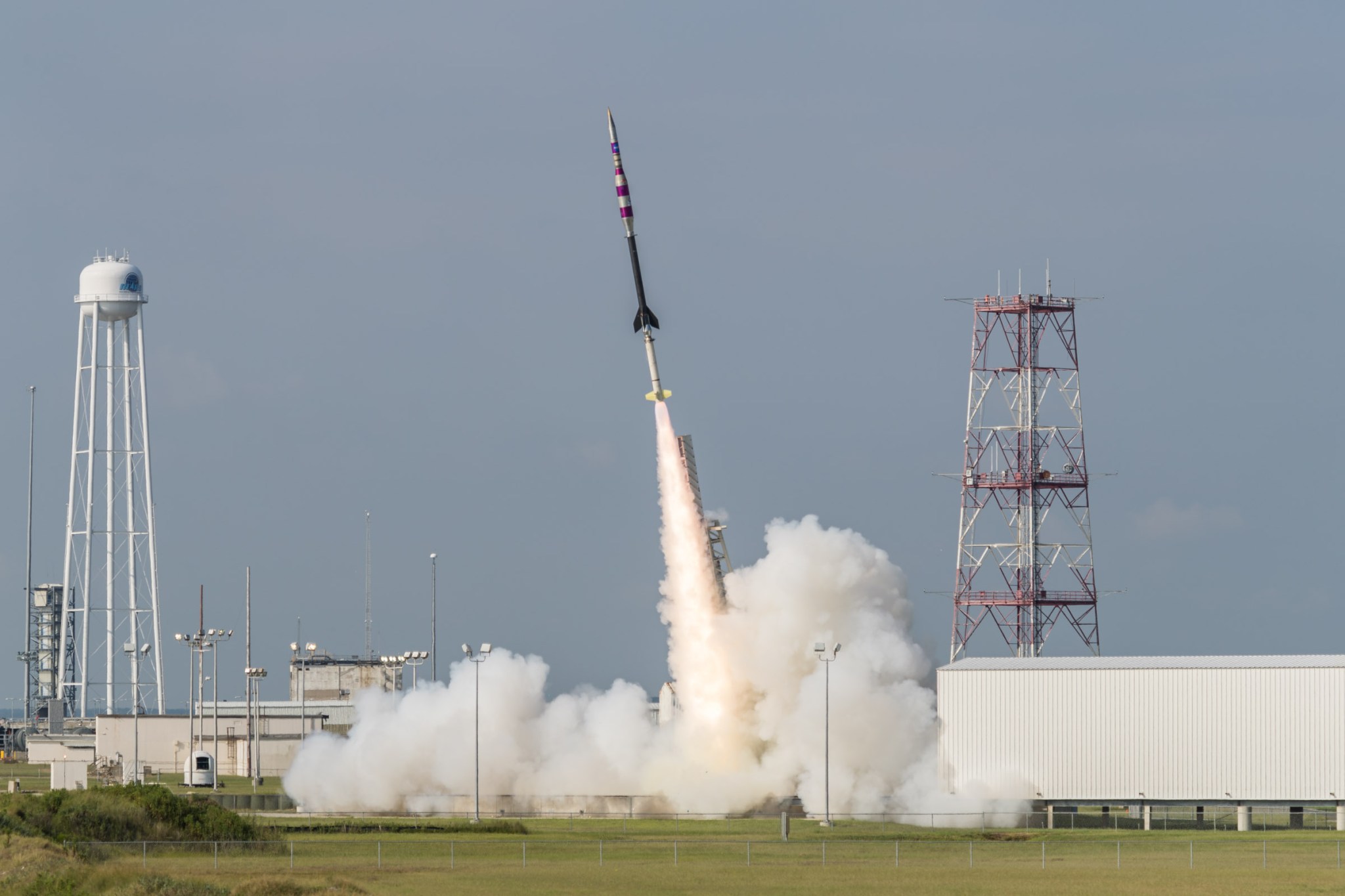
On Friday, September 7, at 9:30 a.m., a parachute test for a future mission to Mars successfully launched on a NASA Black Brant IX suborbital sounding rocket from Wallops Flight Facility. The rocket carried the Advanced Supersonic Parachute Inflation Research Experiment (ASPIRE) from NASA’s Jet Propulsion Laboratory (JPL) in Pasadena, California. The payload is a bullet-nosed, cylindrical structure holding a supersonic parachute, the parachute’s deployment mechanism, and the test’s high-definition instrumentation, including cameras, to record data. The payload descended by parachute and splashed-down in the Atlantic Ocean 28 miles from Wallops Island. The parachute was successfully recovered and returned to Wallops for data retrieval and inspection.
NASA/Allison Stancil


























